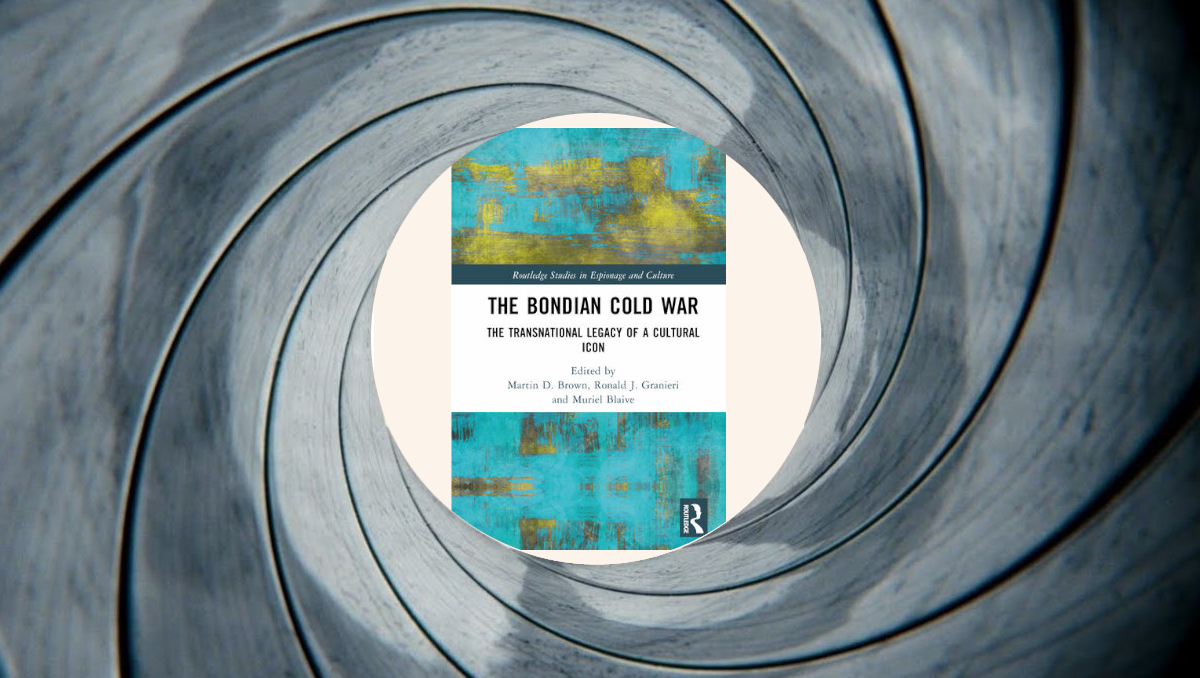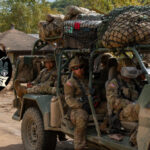
Born in the midst of the Cold War, James Bond was often considered the consummate Cold Warrior. But within the 14 original novels, 9 short stories, 40 continuation novels, 10 Young Bond novels and 25 movies to date, the fictional reflection of the struggles between the West and the Soviet Union was far more complex than reality. Martin Brown and Ron Granieri are guests in the studio to discuss their new book, The Bondian Cold War: The Transnational Legacy of a Cultural Icon. Martin and Ron, along with their fellow editor, Muriel Blaive, who wasn’t able to attend this gathering, have written and gathered a volume of essays that examine the Bondiverse. They join host Gen Lester to discuss the impact 007 has had on the entertainment world, the culture war, and the very real worlds of espionage and diplomacy.
The idea that at the 2012 Olympics the producers decided to…bring together the two most important representatives of the UK in 2012, and they were Elizabeth II and Daniel Craig as James Bond…They didn’t have the queen meet Mr. Bean; they had the queen meet James Bond.
Podcast: Download
Martin D. Brown is Professor of International History at Richmond American University London. From September 2018 to August 2019 he was the Lead Researcher, Centre of Excellence in Intercultural Studies, School of Humanities, University of Tallinn in Estonia. His research explores the networks created between the diplomats involved in the negotiations leading up to the Helsinki Final Act of 1975. In addition, he has an interest in the cultural Cold War, especially fictional representations of espionage on page and screen, in particular Bondology.
Ronald J. Granieri is Professor of History at the U.S. Army War College, the podcast editor of A Better Peace: The War Room Podcast and Director of the Center for the Study of America and the West at the Foreign Policy Research Institute. He is the author of The Ambivalent Alliance: Konrad Adenauer, the CDU/CSU, and the West, 1949–1966 (2003).
Genevieve Lester is the DeSerio Chair of Strategic Intelligence at the U.S. Army War College. She is also an Associate Fellow for Strategic Intelligence at the International Institute for Strategic Studies. She holds a PhD and an MA in Political Science from the University Of California, Berkeley and an MA in International Relations and International Economics from the Johns Hopkins School of Advanced International Studies (SAIS) and a BA in History from Carlton College.
The views expressed in this presentation are those of the speakers and do not necessarily reflect those of the U.S. Army War College, U.S. Army, or Department of Defense.





The fact that Bond continues — for thirty plus years past the Old Cold War — could this, possibly, be explained by something like what author Christopher Layne describes below. Herein, where you see the words “U.S. grand strategy,” in the quoted matters below, consider that this may be something like British — before and after the Old Cold War — grand strategy/grand strategic thinking as well(?):
“As [William Appleman] Williams put it, the goal of U.S. grand strategy has been to create an ‘Open Door world’ — and international system, or ‘world order’ — made up of states that are open and subscribe to the United State’s liberal values and institutions and that are open to U.S. economic penetration. An Open Door world rests, therefore, on two pillars: the economic Open Door (maintaining an open international economic system) and the political Open Door (spreading democracy and liberalism abroad). These pillars are linked by the PERCEPTION that ‘closure’ abroad threatens the survival of American core values — what policymakers call ‘the American way of life’ — at home. … In other words, U.S grand strategy is based on the Open Door-derived assumption that political and economic liberalism cannot flourish at home unless they are safe abroad. This deeply rooted belief was reiterated by President George W. Bush in his second inaugural address, when he declared, ‘the survival of liberty in our land increasingly depends on the success of liberty in other lands.’ … ”
(Item in brackets above is mine. See Christopher Layne’s “The Peace of Illusions: American Grand Strategy from 1940 to the Present.” Therein, see Pages 30 and 31.)
“Thus, American grand strategy today (cir. 1998) presents a puzzle. The Soviet Union’s collapse transformed the international system dramatically, but there has been no corresponding change in U.S. grand strategy. In terms of ambitions, interests and alliances, the United States today is following the same grand strategy that it pursued from 1945 until 1991, the strategy of preponderance.”
There is a very simple answer to this grand strategy puzzle: The Soviet Union was a much less central factor in shaping U.S. policy than is commonly supposed. In fact, after the Second World War, American policymakers sought to create a U.S.-led world order based on preeminent U.S. political and military power, and on American values. That was — and remains — the essence of the strategy of preponderance.”
(Item in parenthesis above is mine. See the article “Rethinking American Grand Strategy: Hegemony or Balance of Power in the Twenty-First Century?” by Christopher Layne in “World Policy Journal,” Vol 15, No. 2 [Summer 1998], page 8 [bottom of column “b”] and page 9 [top of column “a”].)
Question — Based on the Above:
Thus, from the perspective provided above, Bond’s dealing with communists, criminals, etc. — both before and after the Old Cold War — this can best be seen from the “Open Door World” (etc.) point of view offered by Christopher Layne above?
As to my “why Bond could continue post-the Old Cold War” thoughts above, also consider the following from NSC-68 (section VI. U.S. Intentions and Capabilities–Actual and Potential, paragraph A. POLITICAL AND PSYCHOLOGICAL):
“Our overall policy at the present time may be described as one designed to foster a world environment in which the American system can survive and flourish. It therefore rejects the concept of isolation and affirms the necessity of our positive participation in the world community.
This broad intention embraces two subsidiary policies. ONE IS A POLICY WHICH WE COULD PROBABLY PURSUE EVEN IF THERE WERE NO SOVIET THREAT. It is a policy of attempting to develop a healthy international community. … ” (Emphasis, in the form of the capitalizations, above are mine.)
Thus, if British thoughts were/are similar to American thoughts above — regarding attempting to develop a healthy international community whether there is a Soviet threat or not — then might this, also, help explain (a) why Bond could continue (much like U.S./Western such policy?) (b) post-the Old Cold War?
Great stuff: an informative and entertaining listen. I’ve written a good deal about the James Bond novels (and to a lesser extent, and less favourably, the movies) on my rleighturner.com website – just go there and search for “James Bond”. Much to discuss!
Thanks! Will check out your site.